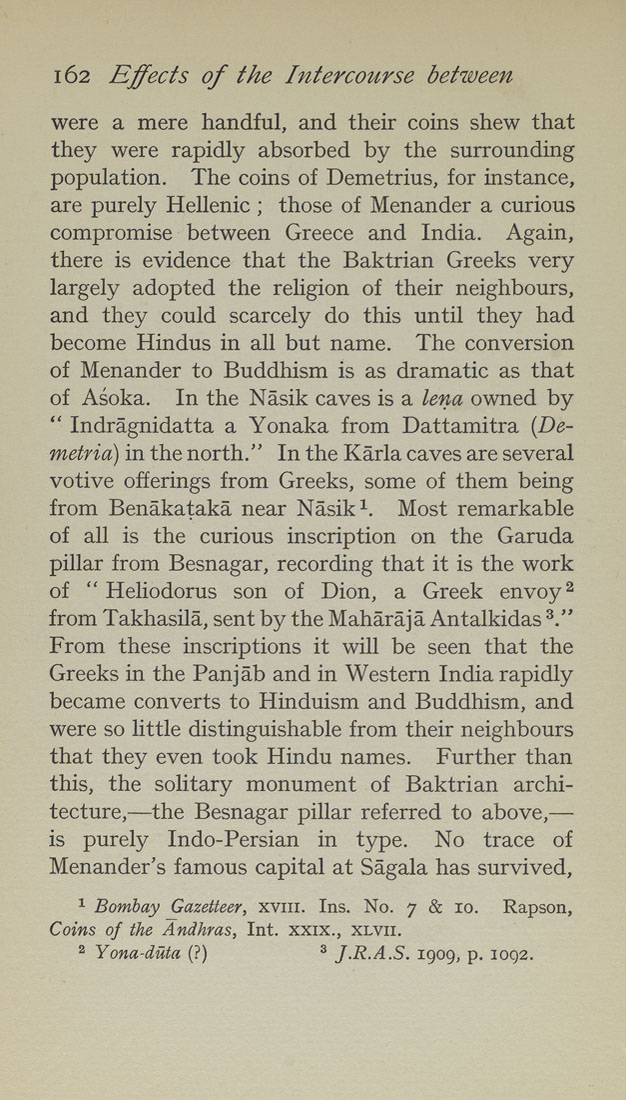162 Effects of the Intercourse between
were a mere handful, and their coins shew that
they were rapidly absorbed by the surrounding
population. The coins of Demetrius, for instance,
are purely Hellenic ; those of Menander a curious
compromise between Greece and India. Again,
there is evidence that the Baktrian Greeks very
largely adopted the religion of their neighbours,
and they could scarcely do this until they had
become Hindus in all but name. The conversion
of Menander to Buddhism is as dramatic as that
of Asoka. In the Nasik caves is a lena owned by
" Indragnidatta a Yonaka from Dattamitra {De-
metrid) in the north.'' In the Karla caves are several
votive offerings from Greeks, some of them being
from Benakataka near Nasik ^. Most remarkable
of all is the curious inscription on the Garuda
pillar from Besnagar, recording that it is the work
of " Heliodorus son of Dion, a Greek envoy ^
from Takhasila, sent by the Maharaja Antalkidas ^."
From these inscriptions it will be seen that the
Greeks in the Panjab and in Western India rapidly
became converts to Hinduism and Buddhism, and
were so little distinguishable from their neighbours
that they even took Hindu names. Further than
this, the solitary monument of Baktrian archi¬
tecture,—the Besnagar pillar referred to above,—
is purely Indo-Persian in type. No trace of
Menander's famous capital at Sagala has survived,
^ Bombay Gazetteer, xviii. Ins. No. 7 & 10. Rapson,
Coins of the Andhras, Int. xxix., xlvii.
2 Yona-duta (?) ^ J.R.A.S. 1909, p. 1092.
|








